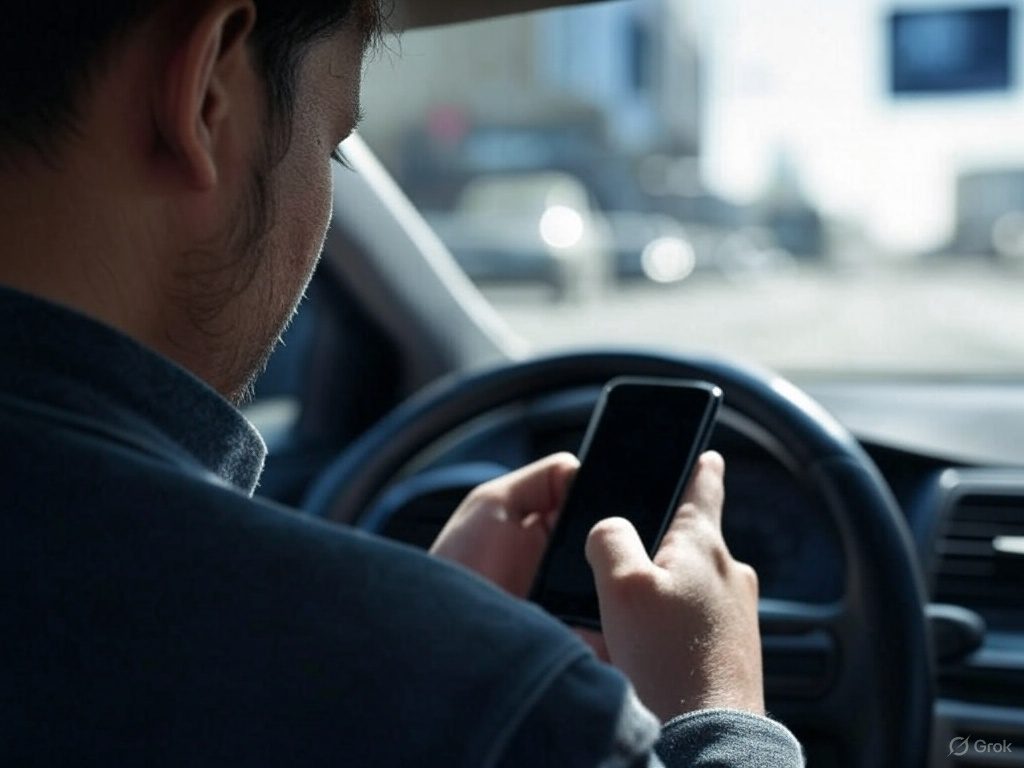Is Distracted Driving Still Wrecking Lives? Experts Say Yes
Imagine you’re cruising down the highway, radio humming, when—ding!—a text lights up your phone. You sneak a glance. Just a second, no harm done, right? Think again. That split-second look could turn a routine drive into a nightmare. Distracted driving has been a road hazard since cars were invented, but experts say smartphones have kicked it into overdrive. All 50 states have laws to fight it—texting bans, hands-free rules—but glance around at the next red light. Drivers are still scrolling X or snapping selfies. So, is distracted driving still a problem in 2025? According to the research, you bet it is.Distracted Driving Statistics: What the Numbers Reveal
The stats from top safety agencies paint a grim picture—and they’re hard to ignore if you’re researching distracted driving dangers:- A daily tragedy: The CDC reports that every day in the U.S., about 9 people die and over 1,000 get injured in crashes involving distracted drivers. That’s a small disaster unfolding daily (CDC).
- Caught on the phone: The NHTSA estimates that, at any daylight moment, around 314,000 drivers are using handheld phones. Next time you’re in traffic, count the culprits (NHTSA via GHSA).
- Lives lost: In 2022, 3,308 people died in distracted driving crashes—8% of all traffic deaths that year, says the NHTSA. Each one left a hole in someone’s world (NHTSA via GHSA).
The NHTSA puts it starkly: texting at 55 mph is like driving a football field’s length blindfolded. Sound safe to you? (NHTSA)
Why Distracted Driving Remains a Persistent Problem
Enforcement Struggles: Every state has some kind of distracted driving law—texting’s banned coast to coast, and many places outlaw handheld calls too, per the GHSA (GHSA). But nailing violators? Tricky. In states with texting-only bans, drivers can dodge tickets by claiming they were on GPS or dialing. Without hard proof, police are stuck. “Not Me” Mindset: Research shows most drivers *know* it’s risky—yet they do it anyway. The NHTSA says there’s a gap between awareness and action: people get the danger but act invincible (NHTSA). And the real toll might be worse—experts suspect crash reports undercount distraction since no one wants to fess up post-wreck. Addiction Meets Overconfidence: Smartphones are basically an extra limb these days. Notifications pull us in like magnets. The CDC notes that drivers who get away with it build a false sense of control—“I can handle it” (CDC). Take Sarah, a 29-year-old from Ohio: “I was answering a work email,” she recalls. “Next thing, my car’s totaled. I’m lucky I survived.” Experts say breaking that cycle takes more than a warning—it’s a habit overhaul.How Education Could Solve the Distracted Driving Crisis
Laws alone won’t cut it, say safety advocates. The real fix? Awareness that sticks. Organizations like the NHTSA spotlight April as Distracted Driving Awareness Month, rolling out campaigns with gut-punching ads—think grieving families pleading for change (NHTSA). Studies show these efforts nudge behavior, bit by bit. Beyond that, schools, companies, and communities are stepping up. Teens like Jake, a junior from Texas, are leading the charge—he launched a “Phone-Free Pledge” at his school after a friend died in a distracted driving crash. “It’s not about preaching,” he says. “It’s about keeping it real.” Research backs this: grassroots moves, paired with hard-hitting facts, can shift how we drive. We’re sharing this info because it matters—check out resources like the Traffic Safety Store Safety Resource Center for more on what the experts are saying.Five Expert-Backed Tips to Avoid Distracted Driving
The pros at agencies like the CDC and NHTSA say small steps can slash your risk. Here’s what they recommend to stop distracted driving:- Ditch the phone: Silence it and stash it—glove box, trunk, anywhere but your hand.
- Prep ahead: Set your GPS and tunes before you roll. Need to adjust? Pull over, not mid-lane.
- One job at a time: Eating or primping? Save it for before or after the drive.
- Use tech wisely: Turn on “Do Not Disturb While Driving” mode—it’s a built-in lifesaver on most phones.
- Call it out: If your driver’s distracted, say something. A quick nudge could be everything.
Disclaimer: This article is for general informational purposes only. Please understand and follow local laws and specific state regulations. Speed Limit information reflects infomation available as of March 17, 2025. Speed Limits vary by road type, vehicle type and or local conditions and laws are subject to change.
Learn more about traffic cones, traffic signs, barriers, high-visibility gear and other traffic safety solutions at TrafficSafetyStore.com. You can also explore our wide range of Road Flares and Roadside Emergency Kits, and Warning Triangles to find the right fit for your specific needs.

